Delighted of Tunbridge Wells
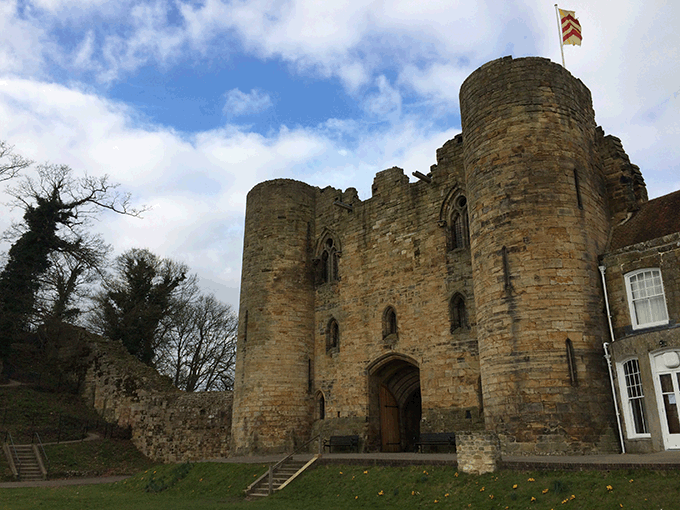
The closing scene of David Lean’s epic Lawrence of Arabia sees the diplomat Mr Dryden answering Prince Faisal: “Me, your Highness? On the whole I wish I’d stayed in Tunbridge Wells.” This typical world-weary response characterises the perception that the town was once a retirement home for old colonials. But then the well-heeled have been drawn here for over four centuries. Situated at the northern edge of the High Weald, the town of Tunbridge Wells grew from the discovery of the spa waters in 1606. In due course, the Georgian “den of iniquity” became the byword for Victorian respectability.
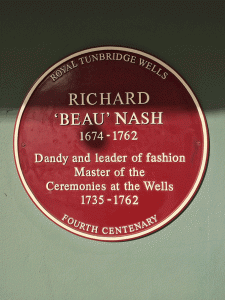
Royal Tunbridge Wells (often shortened to Tunbridge Wells) is a large town in western Kent, close to the border of the county of East Sussex. The “Royal” prefix dates to 1909, when King Edward VII granted the town its official regal title to celebrate its popularity over the years among members of the Royal family. Royal Tunbridge Wells is one of only three towns in England to have been bestowed this honour; the others being Royal Leamington Spa (1838) and Royal Wootton Bassett (2011).
The town came into being as a spa during the Restoration and had its heyday as a tourist resort under the celebrated dandy Beau Nash, when The Pantiles and its Chalybeate Spring attracted visitors who wished to take the waters. Formerly known as The Walks (both Upper and Lower), and then The Parade, the Georgian colonnade of The Pantiles leads from the well that gave the town its name. But the pantiles that once used to pave the Upper Walks should not be confused with roofing pantiles.
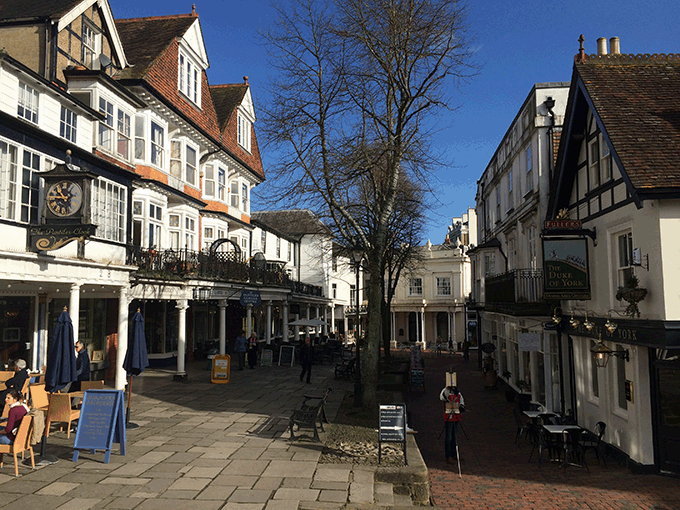
Edward Hasted, the author of The History and Topographical Survey of the County of Kent, made the claim that although the wells were originally named the “Queen’s Wells”, in honour of Queen Mary II, they soon took on the name of Tunbridge Wells due to their proximity to the town of Tonbridge (then known as Tunbridge). Although “Wells” has a plural form, it refers to the principal source, the Chalybeate Spring in The Pantiles. These chalybeate waters, also known as ferruginous waters, are rich in iron, giving them a unique taste. Samples from the spring are served by costumed “Dippers” every summer, though the rusty-coloured water may not appeal to all tastes.
At the end of The Pantiles is a Restoration gem. King Charles the Martyr is the oldest church in the town, erected in 1678, enlarged in 1696 and again in 1882 by Ewan Christian, who added the chancel. The woodwork in the new chancel came from one of Sir Christopher Wren’s London churches and there is a beautiful moulded plaster ceiling of 1690 by Henry Doogood, for which alone it is well worth visiting. He was chief plasterer to Wren and it shows. A young Queen Victoria was a regular visitor and a plaque commemorates this. Her pew also happens to offer the best view of the peaceful interior, which makes for a delightful respite from the roar of traffic outside.
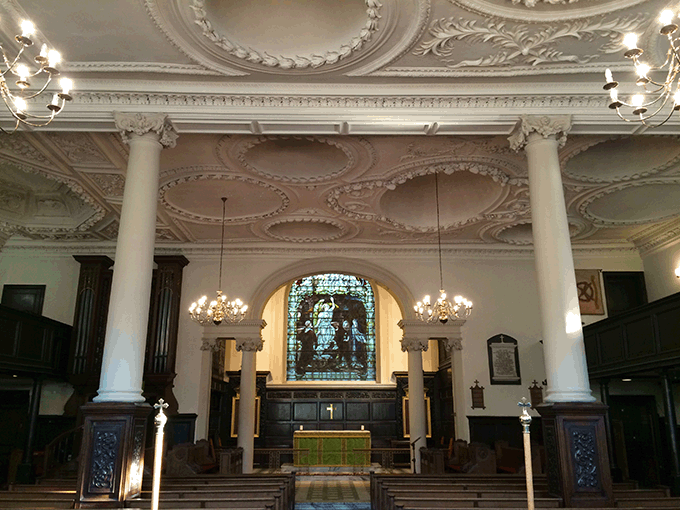
North of the town centre, the excellent Tunbridge Wells Museum covers the history of the town and the surrounding area, with wide-ranging collections including dolls, toys and games that will be of particular interest to children. The museum boasts the world’s largest collection of Tunbridge Ware, a distinctive style of intricate wooden marquetry spanning more than three centuries from 1600 to the 1920s. The natural history collection has over 28,000 artefacts including geology, fossils (don’t miss the dinosaur footprint), shells and stuffed animals. The extensive butterfly and moth collection ranks among the finest in any local museum. There are also large collections of clothing and textiles dating from the 18th century, as well as coins, archaeology, fine art and extensive displays of local history.
Several kilometres north-east of Tunbridge Wells is the historic Penshurst Place. This great house is the ancestral home of the Sidney family and the birthplace of the great Elizabethan poet, courtier and soldier, Sir Philip Sidney. The original medieval house is one of the most complete examples of 14th-century domestic architecture in England surviving in its original location. Parts of the palace, including the Great Hall, Elizabethan state rooms and gardens, are open to the public.
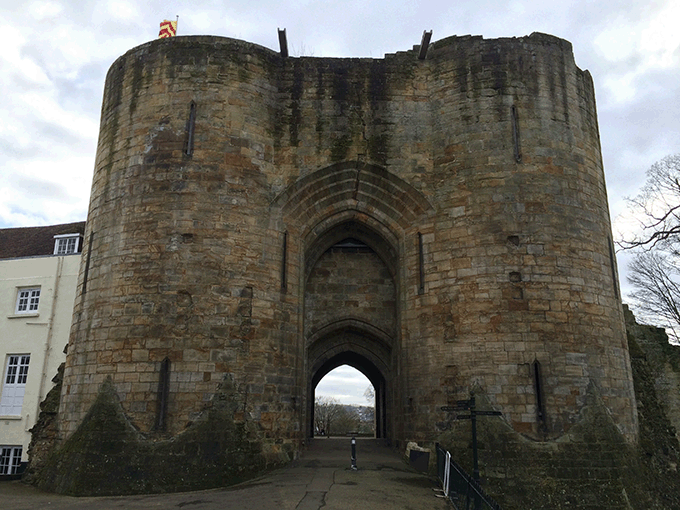
Heading east, the aforementioned town of Tonbridge boasts Kent’s best example of a motte-and-bailey castle. To dig the moat and erect the motte, a staggering 50,000 tonnes of earth were moved. Its mighty gatehouse is among the finest in England. Yet its glory lies not only in what can be seen. Its story is interwoven with that of kings and archbishops, tyrants and heroes, murderers and mercenaries who, on this ancient site and inside these weathered stone walls, have helped write nine centuries of English history. Audio tours of the castle are available. Chainmail is not included.
Heading further east, the village of Tudeley is home to All Saints’ Church, the only church in the world that has all its windows in stained glass designed by Marc Chagall. The east window was commissioned by Sir Henry and Lady d’Avigdor-Goldsmid in memory of their daughter Sarah, who died aged 21 in a boating accident in 1963. The other windows were added later, the final ones being installed in 1985, the year of Chagall’s death. Whether or not you are a fan of the artist, a visit on a sunny day will see you bathed in a kaleidoscope of colours and moved by the memorial.
A short hop south of the village brings you to RSPB Tudeley Woods, a remnant of the vast primeval forest of the Weald. A trio of captivating walks snake through the newly restored heathland and ancient woodland. In some areas there are grand old trees; in others the trees have been coppiced to open up the woodland floor to allow flowers and butterflies to flourish. There are more than a thousand species of fungi in the woods and beautiful orchids intermingled with an impressive carpet of bluebells and primroses in spring. In the areas where the heathland has been restored, Tree Pipit, Woodlark and Nightjar are returning and hopefully the charismatic Dartford Warbler will colonise.
The popularity of Tunbridge Wells may have waned with the advent of sea bathing but this is clearly a town with lasting appeal. Not only is it rich in history and architecture, but its various green open spaces range from woodland to meticulously maintained grounds and parks. This is a town to wander at will and soak up the atmosphere. Surprises lie in wait around every corner. A medley of specialist shops, art galleries, cafés, restaurants and bars cater to those who wish to take a break from culture. The old colonials may be long gone, but the town continues to perpetuate the view that it is the most English of conurbations. After all, William Makepeace Thackeray wrote Vanity Fair here. Prepare to be delighted rather than disgusted.
PLANNING YOUR VISIT
GETTING THERE
By car, Royal Tunbridge Wells is situated on the A26 and A21 routes from London to the south coast and can be reached from both the M20 and M25 motorways within 20 minutes by car. When it comes to parking in the town centre and surrounding areas, there is plenty of space with several public car parks in the town centre alone.
By train, Tunbridge Wells is on the mainline rail service from Charing Cross to Hastings. Direct services run at regular intervals stopping at London Bridge, Waterloo East, Sevenoaks and Tonbridge. Services take approximately 50 minutes from Charing Cross. There are also connecting services to Gatwick Airport and Ashford International stations. Further details on trains to Tunbridge Wells are available on the National Rail Enquiries website: www.nationalrail.co.uk; Tel: 08457 484 950
WHERE TO STAY
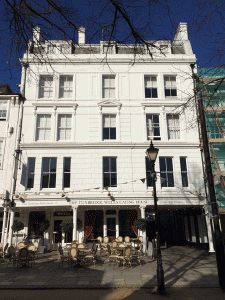
The Tunbridge Wells Hotel is a small boutique hotel based on the historic Pantiles. Decorated in Georgian style with all modern amenities. Address: 58 The Pantiles, Royal Tunbridge Wells, Tunbridge Wells, Kent TN2 5TD. Tel: 01892 530 501; www.thetunbridgewellshotel.com
WHERE TO EAT
The Black Pig, 18 Grove Hill Rd, Tunbridge Wells, Kent TN1 1RZ, is a good gastropub that offers simple well-cooked food with sleek use of space, soft leather couches and eye-catching topiary. As the name suggests, they specialise in porcine dishes. Tel: 01892 523 030; www.theblackpig.net
Alternatively, just outside the town, The Hare at Langton Green (where the famous table top football game Subbuteo was invented) is a lovely old pub where much care is taken over ingredients and preparation of the food. You are assured a warm welcome here. Address: Langton Road, Langton Green, Tunbridge Wells, Kent, TN3 0JA. Tel: 01892 862 419; www.brunningandprice.co.uk/hare
WHERE TO SHOP
The countryside in the Tunbridge Wells area really lives up to its reputation as part of the Garden of England. Colourful local farmers’ markets take place in Civic Way outside the Town Hall on the second and fourth Saturdays in the month and on the first and third Saturdays in The Pantiles.
DON’T MISS
A performance at the vibrant Trinity Theatre in the centre of town. You will catch art movies, world cinema and cult classics in the excellent Trinity, which also stages quality repertory theatre, dance and stand-up in an atmospherically converted church. Tel: 01892 678 678; www.trinitytheatre.net
MORE INFORMATION
The Tunbridge Wells Tourist Information Centre is located in the Corn Exchange on The Pantiles. It is open every day from 10am to 3pm, bar Sundays in summer (April–September) and also Mondays in winter (October–March). Tel: 01892 515 675; www.visittunbridgewells.com
“DISGUSTED OF TUNBRIDGE WELLS”
The phrase “Disgusted of Tunbridge Wells” is a generic term used in the United Kingdom for someone, usually of strong Conservative political views, who writes letters to newspapers in a tone of moral outrage. According to local historian and former newspaper editor Frank Chapman, the phrase originated in the 1950s with the staff of the former Tunbridge Wells Advertiser. The paper’s editor, alarmed at a lack of letters from readers, insisted his staff penned a few of their own to fill space. One signed himself simply “Disgusted, Tunbridge Wells”. The phrase was given wide currency in the early 1950s by the BBC Radio comedy series Take it from Here in which “Disgusted”, played by Wallas Eaton, would make a ludicrous protest to give the cue for a sketch by Jimmy Edwards and Dick Bentley. In 1978, Radio 4 called its new listener feedback programme, Disgusted, Tunbridge Wells, though it has since been renamed “Feedback”. In recent times, some residents of Tunbridge Wells have called the tag “inappropriate” and “stereotypical” and want the town to drop any association with it in favour of “Delighted of Tunbridge Wells”.
Words and photographs: Ed Hutchings



